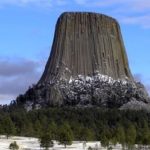By Ryan Mulvey, Opinion Contributor
Presidential interference with public access to politically sensitive agency records has been an ongoing fight that seems unlikely to end anytime soon, and now it appears Congress has decided to get into the game. My organization, Cause of Action Institute (“CoA Institute”), has long been at the forefront of fighting against unlawful obstruction of the Freedom of Information Act (“FOIA”). Last year, we filed a lawsuit against the Office of the White House Counsel to end the practice of “White House equities” review, which results in the delay of responses to FOIA requests that the administration deems politically embarrassing. With that lawsuit still ongoing, Congress has taken a page from the White House’s playbook to keep records of its dealings with agencies hidden from public view, too.
BuzzFeed reported last week that Financial Services Committee Chairman Jeb Hensarling (R-Texas) sent a letter to the Treasury Department that directed the agency to treat all records exchanged with the committee as “congressional records” not subject to the FOIA. Read More

